Has your AC Stopped Working?
If your cooling system has stopped working, here are a few things to check before calling for service.
it’s a good idea to check thermostat as a first step.
- Check your thermostat settings to ensure your system is “On” and that your thermostat batteries are not low or dead.
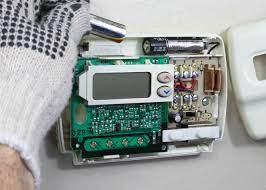
- Check that your system is receiving power from the main electrical panel. Locate your circuit breaker (usually in a hallway, hallway closet or garage)
- First, check to see if there are any breakers tripped. (see below)
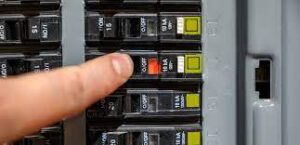
Next, locate the breakers for your air conditioner.
Units are usually marked:
“A/C” – (Outdoor unit)
“C/U” – (Outdoor unit)
“CONDENSER” – (Outdoor unit)
“A/H” – (Indoor unit)
“HEAT” – (indoor unit)
“HANDLER” – (Indoor unit)
Then, turn off the breakers for both the outdoor unit as well as the indoor unit.
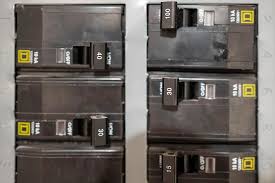
Note: If breaker is located on the left side of the panel, turn breaker off by flipping switch to the left side of the panel.
Note: If breaker is located on the right side of the panel, turn breaker off by flipping switch to the right side of the panel.
Finally, wait about 3 minutes and then turn the breakers back on.
Note: if the breaker trips again, then there is either an electrical issue or an issue with the air conditioners starting components.
Call for service if this is the case.
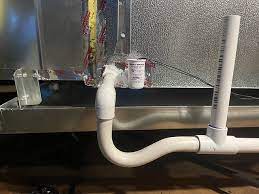
Your AC system not only cools your home, but also removes moisture from the air and improves the humidity level. The condensate drain helps this process.
The condensate drain is connected to the indoor air handler, and any time excess water is collected from your AC system, it’s then drained through a small pipe to the outside of your home.
Over time the drain line will become clogged with bio growth and will prevent the unit from draining the water outside of the home.
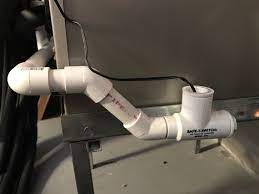
Your AC system not only cools your home, but also removes moisture from the air and improves the humidity level. The condensate drain helps this process.
The condensate drain is connected to the indoor air handler, and any time excess water is collected from your AC system, it’s then drained through a small pipe to the outside of your home.
A normal, clean drain line should drip near the outdoor access point onto the ground; during the hot Florida summer months, this can even be more of a trickle or stream. Over time, the drain line can get clogged with algae and mildew. If your drain pan is filled with water, it’s a good sign your drain line is blocked.
When this happens, there is a safety device that will shut system down and not allow system to run at all to prevent water damage in your home.
But, here’s good news, minor drain line clogs are easy to fix. Here’s how:
- First, turn off your AC system using the thermostat.

- Locate the outdoor drain line, which is usually a narrow PVC pipe near the outside condenser unit. Look around the perimeter of the house if need be.
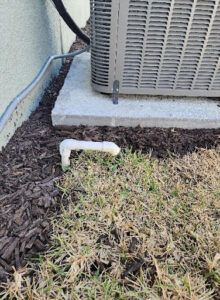

- Identify the indoor drain line access point that’s covered by a cap. Remove the cap, and check if it appears to be clogged.
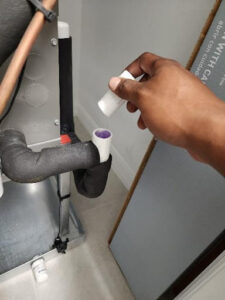
- Connect shop vac to pipe and get a good seal.

- Turn on shop vac and see if there is suction at PVC pipe inside.
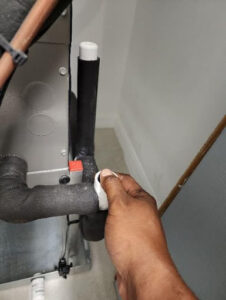
- Add hot water while vacuum is running to get a good flush.

- Remove vacuum from pvc pipe outside and pour ½ gallon of water through pipe.

- Remove water from water safety device.

- After water is removed from safety device, slide water safety float back in place.
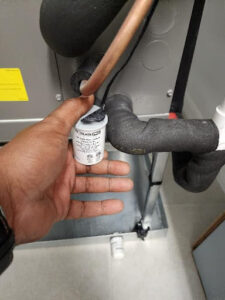
- Finally, turn system back on at thermostat.

System should be up and running. If you have any difficulties, contact us and we will walk you through or be right out to resolve your issue. We are always happy to help.
Over the Florida summer season, you may run into a common AC issue: frozen evaporator coils. This can happen when airflow is restricted within your unit and does not warm the coils like it should, causing ice to form.
While a dirty air filter or restricted airflow within your ductwork can lead to frozen evaporator coils, this issue is commonly caused by low refrigerant levels or leaks. All air conditioners require refrigerant, also known as freon, to operate. When a leak or low levels are present, the pressure of your system can drop and cause the coils to freeze up.
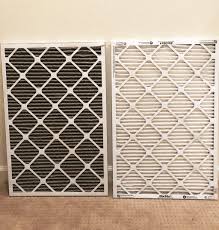
Here’s how to troubleshoot the problem:
- Turn off your AC system from the thermostat.
- Remove the filter from your air handler to inspect the evaporator coils.
- If ice is present on the coils, turn on the “Fan” mode from the thermostat. This will allow warmer air to move over the coils and unfreeze any ice that’s formed. Depending on the amount of ice, it can take anywhere from 30 minutes to a few hours to unfreeze completely, so be patient.
- Once unfrozen, adjust your thermostat from “Fan” to “Cool.” As your AC equipment works to cool down your home, check if the coils freeze again.
If the AC system evaporator coils continue to freeze, you may need a professional coil cleaning, freon refill or refrigerant leak repair. Always seek professional help for these AC issues.
If your AC doesn’t turn off when room temperature reaches the temperature set on the thermostat, the problem is generally occurring either at the thermostat or in the electrical system that runs the outside condensing unit.
You can use the AC’s circuit breaker to shut off the unit, but that should not be a permanent solution. Circuit breakers are not designed to be used like light switches.
If the AC doesn’t turn off, it may be time to clean the condensing unit. Dirty condenser coils won’t give off heat efficiently and will keep the unit running.
Another possibility: The contacts on the outdoor relay may have welded together causing the unit to constantly run. It’s something that can happen over time because of frequent electrical arcing at the relay.
**If this is the case, Contact Nx Gen heating and Cooling to clean and check your unit.**
Trying all these steps can enlighten you to many potential fixes that could help you avoid calling in the pros, but sometimes a pro is exactly what you need. Don’t worry though you tried, and that’s what matters. There’s no shame in handing over your screwdriver to someone who is HVAC-certified.



